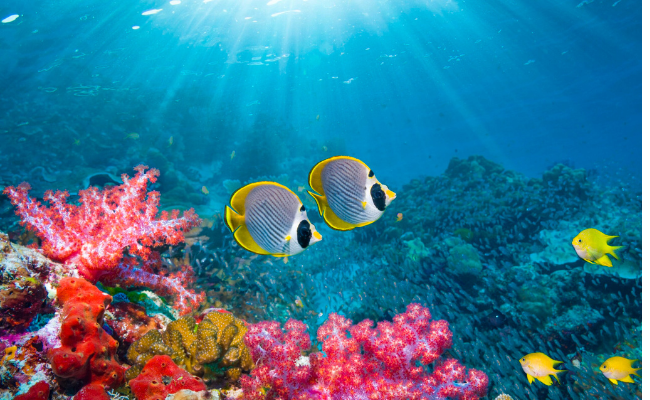Google’s Coral Reef Listening Project Could Help Revitalize Our Oceans
Google Coral Reef Listening Project can play a critical role in revitalizing our oceans. The world’s oceans face several environmental challenges, such as pollution, climate change, and overfishing.
These challenges put marine life at risk and threaten the health of the oceans. Fortunately, a few emerging technologies may help us better understand and address these issues.
The science initiative called “Calling in Our Corals” is a joint effort between Google Arts and Culture in collaboration with the University of California Santa Barbara and the National Oceanic and Atmospheric Administration (NOAA).
About the Project

Photo credit: Georgette Douwma | Getty Images
The project invites individuals to engage in an online platform to listen to coral reef recordings in Marine Protected Areas and recognize the sounds fish, shrimp, and other sea creatures produce. By doing so, they can help monitor the ecosystems and identify prospects for restoring the reefs.
Coral reefs are habitats to a vast array of aquatic life and are critical to our oceans’ health. However, they are under threat from climate change and human activities.
The Coral Reef Listening Project uses underwater microphones called hydrophones to capture the sounds of coral reefs. These hydrophones are operating in ten different reefs in Australia, Indonesia, the Philippines, the United States, Panama, and Sweden. These devices capture hundreds of hours of audio data.
You may also like: Revitalize Your Career This Spring: Expert Tips for Success
The researchers utilize the recorded sounds to revive the biodiversity of the affected reefs. They then analyze the recordings using machine learning to identify patterns and changes in the soundscape over time, enhancing the understanding and research of coral reefs.
According to the project’s website, “The audio datasets you are about to hear have not been moderated by the scientists so they can understand if there are signs of life in the recordings. This will be used to observe ecosystem health, monitor illegal fishing, and measure success at restoration sites.”
What the recordings showed
The Coral Reef Listening Project is still in its early stages but has already produced some promising results. In a pilot project in Hawaii, the project team used hydrophones to monitor the sounds of a coral reef for several months.
The recordings revealed a rich and diverse soundscape, with a wide range of fish and other marine life. The team also identified changes in the soundscape that corresponded to changes in water temperature and the arrival of seasonal storms.
This information can help scientists better understand the effect of climate change on coral reefs and develop strategies to protect them. Besides illegal fishing and habitat destruction, climate change has been identified as “the most significant worldwide danger to coral reef ecosystems.”
You may also like: Ten in Alaska Charge for Smuggling PH Corals
The Problems Facing our Oceans
Coral bleaching has become a widespread phenomenon due to rising ocean temperatures. The ocean’s increased carbon dioxide (CO2) uptake from the atmosphere has caused significant ocean acidification, resulting in coral skeletons erosion.
By determining the specific creatures inhabiting each reef, scientists can identify affected reefs and make informed decisions about replenishing those populations and reviving the reefs’ biodiversity.
How the Coral Reef Listening Project can Help
In a video on the project’s website, Steve Simpson, a marine biology professor at the University of Bristol, explains, “There are thousands of fish species that produce distinctive pops, chirps, and cranks when communicating with one another. Also, snapping shrimps produce a series of popping sounds that, when combined, create a crackling noise in the reef.”
Each recording available on the platform is accompanied by a spectrogram that displays the sound waves’ frequency spectrum. The project provides instructions for distinguishing between creatures with high and low-frequency sounds; you only need to press a button when you hear something.
The Coral Reef Listening Project has the potential to be a game-changer in the fight to protect our oceans. By providing scientists with detailed information about the health of coral reefs, the project can help inform decisions and conservation efforts.
It can also help raise public awareness about the significance of coral reefs and the need to protect them. The project is a great example of how technology can help address environmental challenges.
With more research and development, the “Calling In Our Corals” Project could revitalize our oceans and ensure a healthy future for marine life and the planet.

